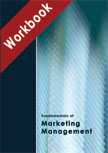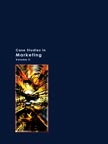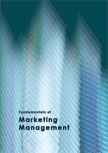Unilever in India: Building the Ice Creams Business




|
|
ICMR HOME | Case Studies Collection
Case Details:
Case Code : MKTA004
Case Length : 14 Pages
Period : 1994-2004
Pub Date : 2004
Teaching Note :Not Available
Organization : Unilever, Hindustan Lever Limited (HLL)
Industry : FMCG
Countries : India
To download Unilever in India: Building the Ice Creams Business case study
(Case Code: MKTA004) click on the button below, and select the case from the list of available cases:

Price:
For delivery in electronic format: Rs. 300;
For delivery through courier (within India): Rs. 300 + Rs. 25 for Shipping & Handling Charges
» Marketing Case Studies Collection
» Marketing Communications Short Case Studies
» View Detailed Pricing Info
» How To Order This Case
» Business Case Studies
» Case Studies by Area
» Case Studies by Industry
» Case Studies by Company
Please note:
This case study was compiled from published sources, and is intended to be used as a basis for class discussion. It is not intended to illustrate either effective or ineffective handling of a management situation. Nor is it a primary information source.
|
|
<< Previous
Background Note
|
HLL's origin went back to 1885 when the Lever Brothers set up "William Hesketh Lever", in England. After merging with 'Margarine Unie' (a Netherlands based company which exported vanaspati to India), to form Unilever in 1930, the company set up three subsidiaries in India.
In November 1956, the three Indian subsidiaries merged to form Hindustan Lever Ltd. (HLL).
In 2003, HLL was India's largest Fast Moving Consumer Goods (FMCG) company with a turnover of over Rs. 10,000 crores, an employee strength of 40,000 and more than 110 brands. It was well ahead of all the other players in the industry.
|
|
HLL was a market leader in almost all the product categories in which it had a presence - soaps and detergents, hair care, skin care, household products, dental products and foods and beverages. HLL classified 30 of its brands as power brands. These were the best selling brands that contributed about 80% of the revenues.
|
|
Examples were Surf, Fair & Lovely, Kissan, Pepsodent, Close-up, Sunsilk, Clinic, Lux, Lifebuoy, Wheel, Lakme, and Kwality Wall's. All these brands had become household names. HLL's ice-cream business had evolved through a number of acquisitions of ice cream brands and strategic tie-ups with Indian groups. Unilever, HLL's parent company had experienced a phenomenal success in its food business in Europe in the early 1990s. This prompted Unilever to expand its food portfolio worldwide. India was identified as a promising market. Unilever entered the food business through group company Brooke Bond Lipton India Ltd. (BBLIL)2, which had acquired Kissan from the UB group and Dollops ice cream from Cadbury India in the early 1990s... |
Excerpts >>
|
|



